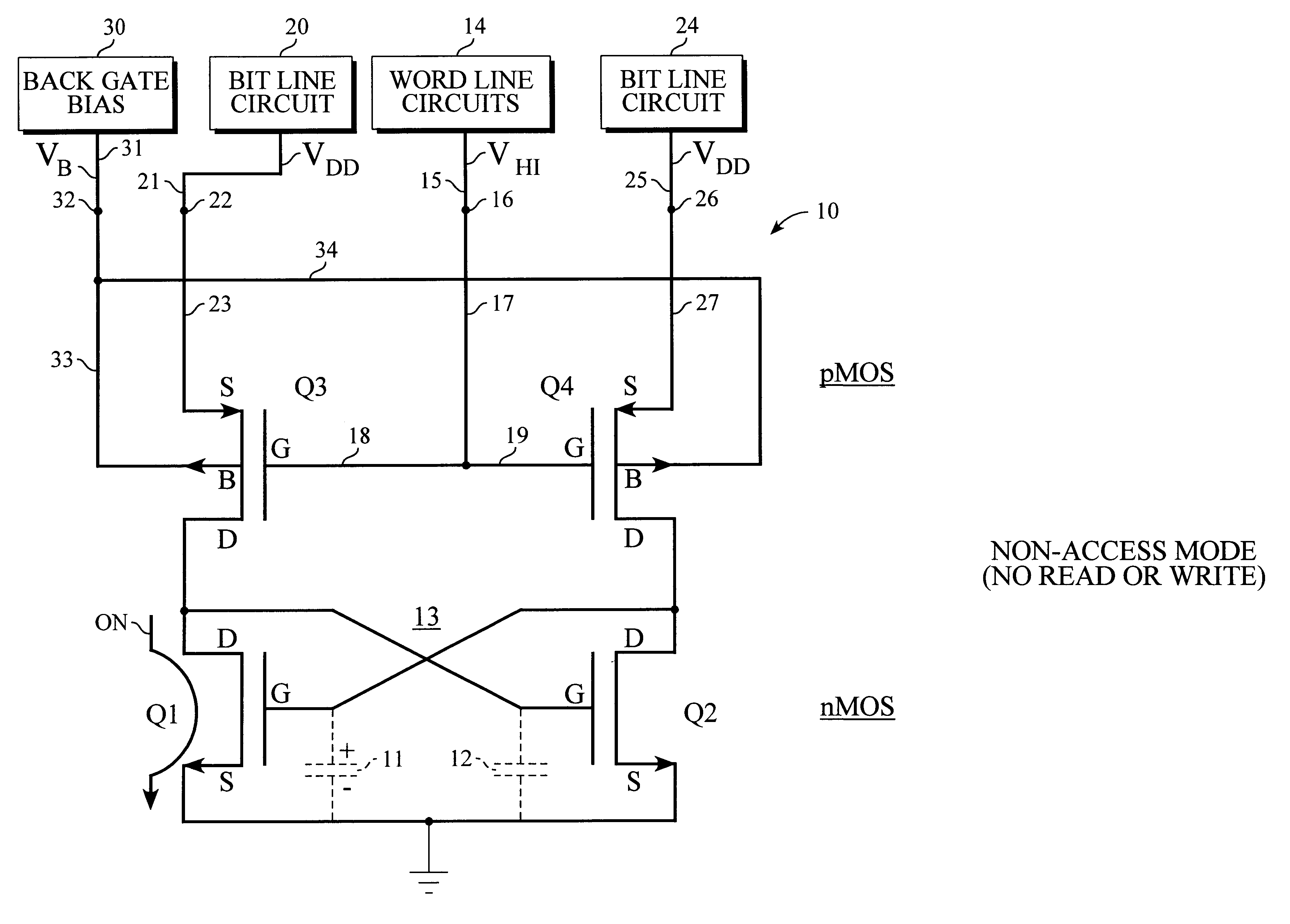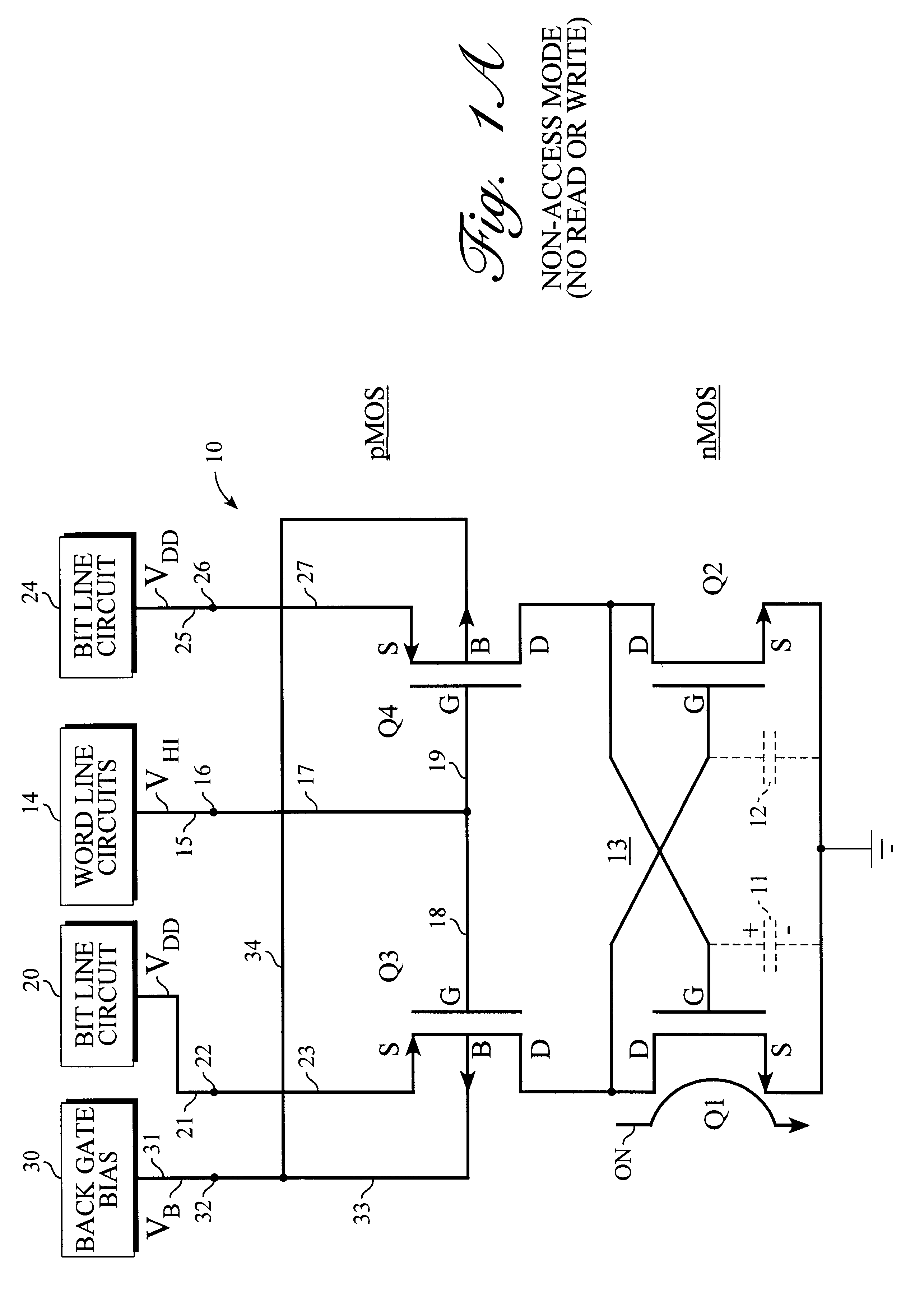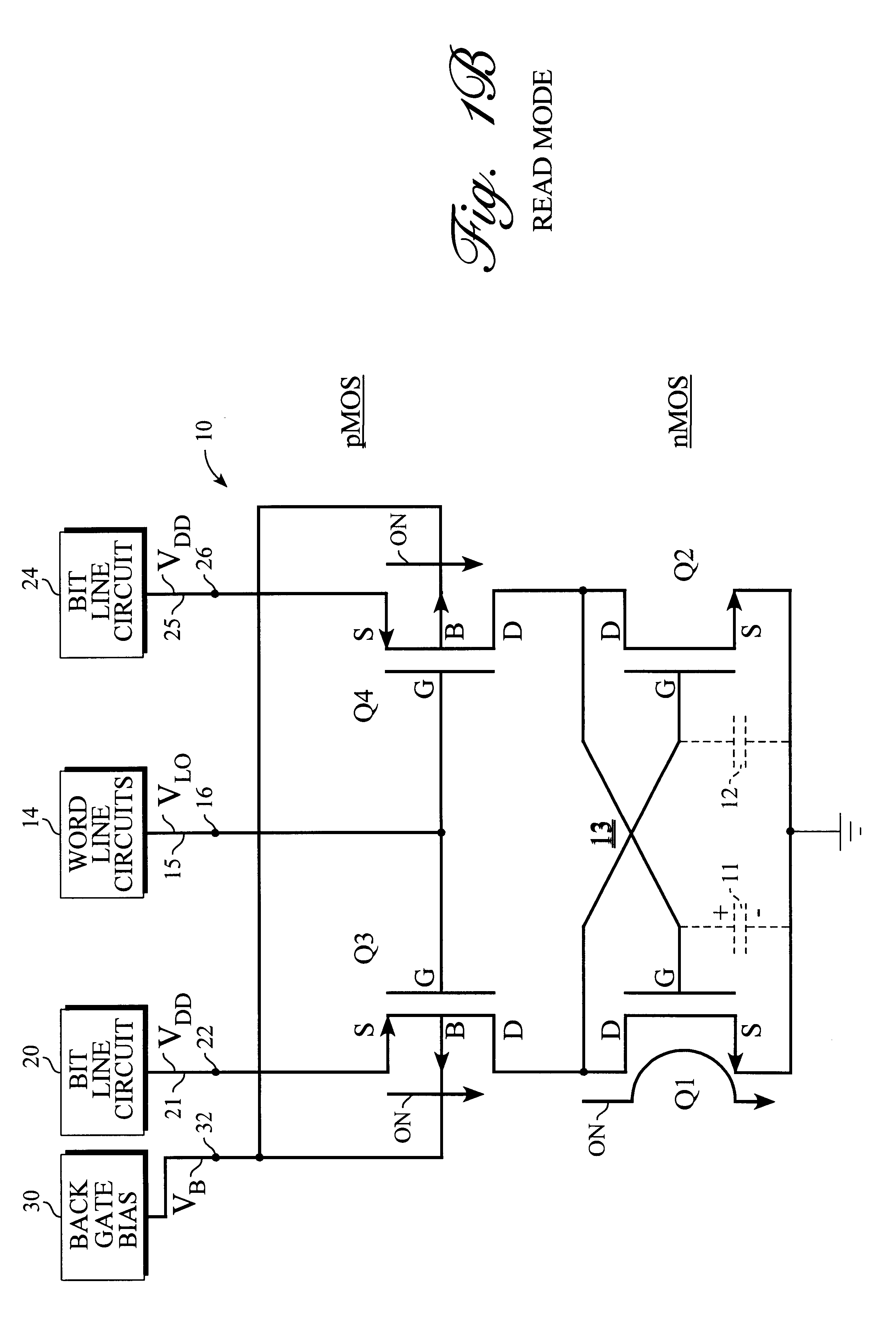Static random access memory (RAM) systems and storage cell for same
a random access memory and storage cell technology, applied in static storage, information storage, digital storage, etc., can solve the problems of requiring more space on a semiconductor chip, requiring less power, and reducing the storage capacity of the chip
- Summary
- Abstract
- Description
- Claims
- Application Information
AI Technical Summary
Problems solved by technology
Method used
Image
Examples
first embodiment
Referring to FIG. 1A, there is shown a static RAM (random access memory) storage cell 10 constructed in accordance with the present invention. Storage cell 10 is a four-transistor storage cell comprising transistors Q1, Q2, Q3 and Q4. In the present embodiment, each of these transistors is a metal oxide semiconductor (MOS) type field effect transistor (FET). Each of transistors Q1-Q4 includes a source terminal S, a drain terminal D and a gate terminal G. Each of these transistors also includes a fourth terminal, namely, a back gate terminal B that is comprised of the body or substrate of the transistor. This back gate terminal is usually not mentioned and is usually not shown in circuit diagrams. This back gate terminal B is usually assumed to be connected internally to the source terminal S or to the appropriate power supply circuit and is normally not discussed in connection with the operation of the transistor. This back gate terminal B, however, can be of value and is used by th...
second embodiment
Referring now to FIG. 5 of the drawings, there is shown a static RAM storage cell 40 constructed in accordance with the present invention. In this embodiment, the channel types for the storage transistors and the bit line coupling transistors are reversed. In particular, FIG. 5 shows a pair of storage transistors Q5 and Q6, which are cross-coupled to form a bistable circuit 41. In this case, storage transistors Q5 and Q6 are p-channel MOS field-effect transistors. The storage cell 40 further includes first and second bit line coupling transistors Q7 and Q8 individually connected in series with the different ones of the first and second storage transistors Q5 and Q6. In the FIG. 5 case, the bit line coupling transistors Q7 and Q8 are n-channel MOS field-effect transistors. The voltages shown in FIG. 5 are for the non-access or standby mode.
A word line circuit 42 supplies access and non-access voltages to the normal gate terminals G of coupling transistors Q7 and Q8. The non-access vo...
PUM
 Login to View More
Login to View More Abstract
Description
Claims
Application Information
 Login to View More
Login to View More - R&D
- Intellectual Property
- Life Sciences
- Materials
- Tech Scout
- Unparalleled Data Quality
- Higher Quality Content
- 60% Fewer Hallucinations
Browse by: Latest US Patents, China's latest patents, Technical Efficacy Thesaurus, Application Domain, Technology Topic, Popular Technical Reports.
© 2025 PatSnap. All rights reserved.Legal|Privacy policy|Modern Slavery Act Transparency Statement|Sitemap|About US| Contact US: help@patsnap.com



